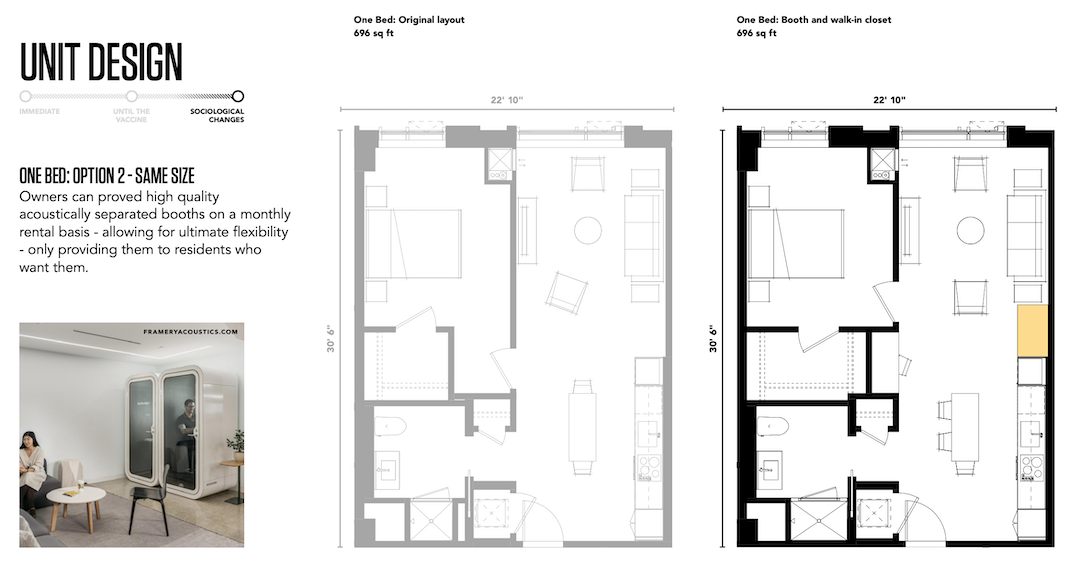The Covid-19 pandemic has presented a whole new set of problems, questions, and concerns for multifamily designers and owners looking to attract residents while reassuring them of the safety and comfort of their carefully curated residential environments.
Even before the pandemic, several projects our firm recently completed in the Boston area were well-positioned to attract prospective tenants by incorporating elements of health and wellness, safety, flexibility, and easy access to outdoor spaces.
These fundamental components have always been central to CBT’s design philosophy and are crucial in meeting the changing needs of residents during the pandemic – and, we hope, in its aftermath.
By designing around the occupier experience – whether it’s the need for light and outdoor space, larger mailrooms, or spacious coworking areas – architects and their developer clients can ensure that their buildings remain highly competitive and desirable now and into the future.
MARKET CENTRAL – OUTDOOR SEATING CHOICES, MERV 13S, AND FITNESS UPGRADES
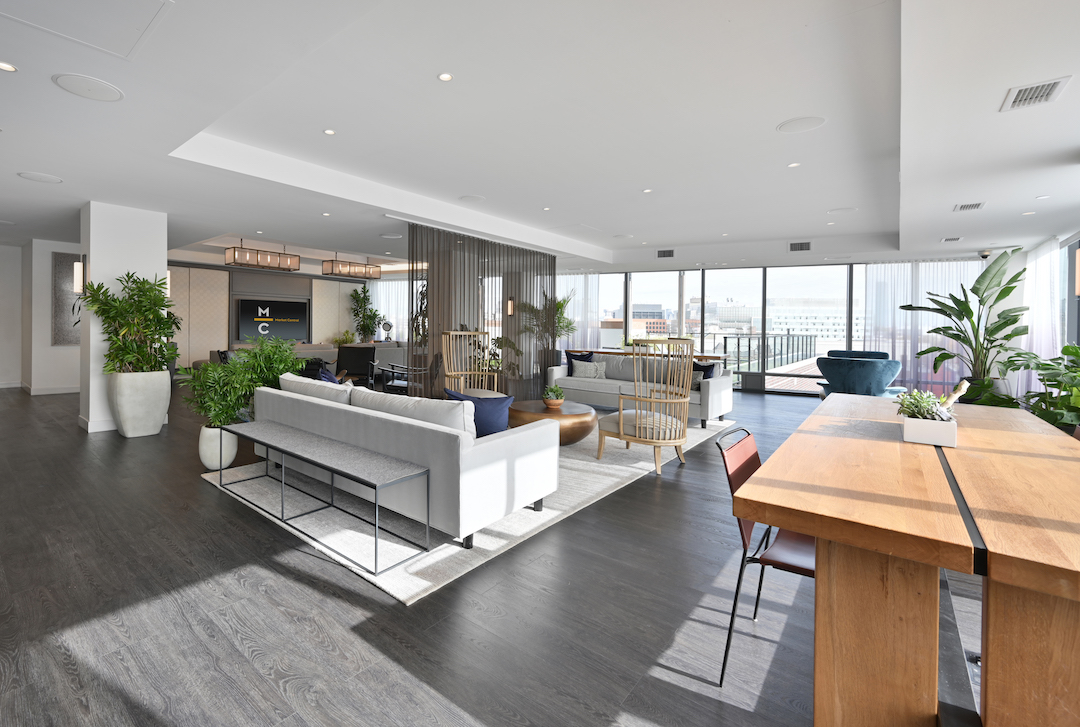
Photo: @flauntboston
This space, adjacent to an outdoor terrace, shows a variety of seating choices for indoor or outdoor lounge seating so that residents can be distanced from others, if they wish, or can congregate in different sized groups.
The owner, Twining Properties, made adjustments in April 2020, right at the start of pandemic, to install MERV 13 UV filters.
The unit floor plans were reworked to allow space for desks, and Twining Properties offered exclusive discounts through office furniture companies to accommodate the rapidly changing home office paradigm.
Photo: @flauntboston
In the fitness center, plexiglass separations were fitted between pieces of actively used equipment and placed on foot pads so that they can be shifted around as needed.
Air grilles above the equipment show evidence of the HVAC upgrade with MERV 13 filters. Attractive, well-equipped fitness centers are crucial to the success of the leasing program for upscale urban multifamily communities.
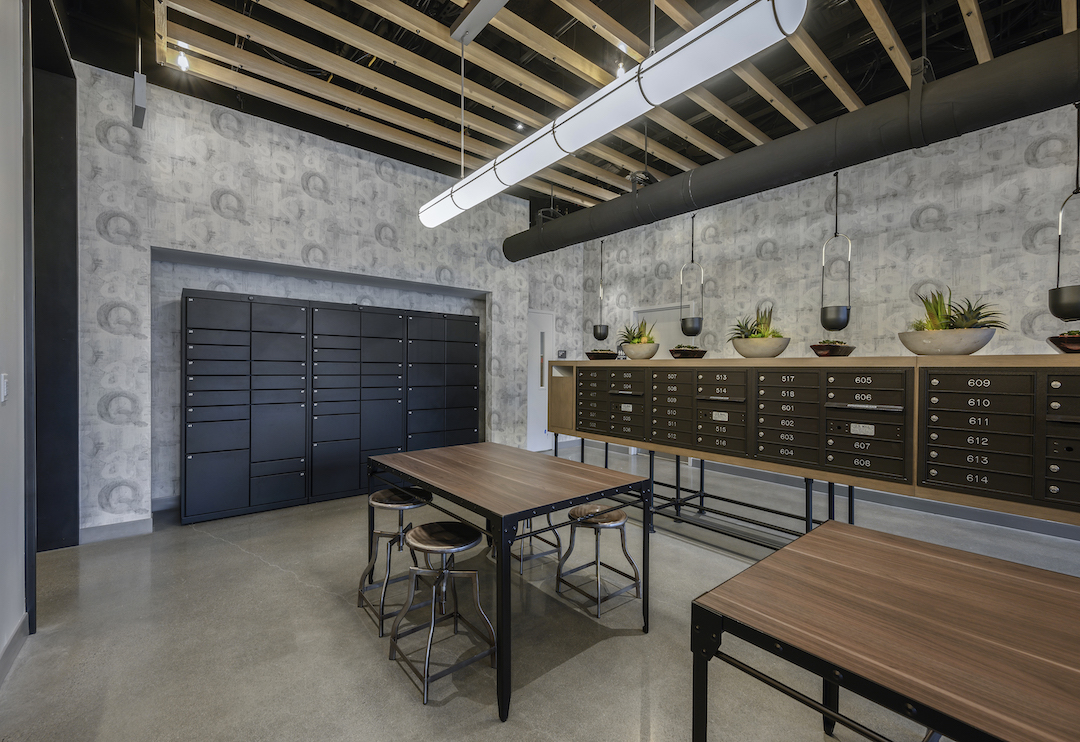
Photo: @flauntboston
The property has three package centers: a large Luxer One-managed locker center, a concierge package room, and a “non-concierge” mail center. This configuration reduced overlap and crowding by residents congregating in a single package station.
The ductwork across the ceiling of the package center was tied to the MERV 13 filters.
At the start of the pandemic, cardboard waste was piling up in the package center as residents started receiving more and more packages, so additional bins for cardboard collection were brought in. Hand sanitation stations were added later.
THE SMITH – A TWO-STAR FITWEL FIRST
The Smith, the first multifamily project to achieve Fitwel Multifamily Residential v2.1 certification (2 stars), provides residents ample access to a variety of outdoor spaces.
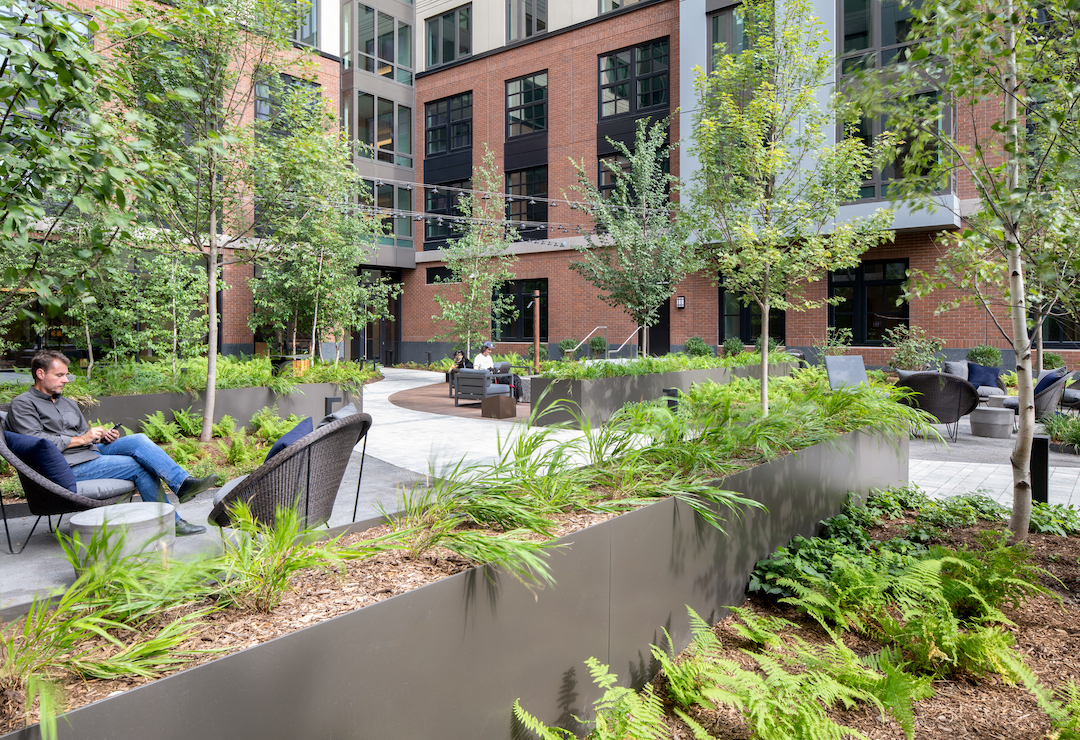
Photo: Ed Wonsek
Leggat McCall Properties and BentallGreenOak were the developers of the 300-unit LEED Silver property at 89 East Dedham St., Boston.
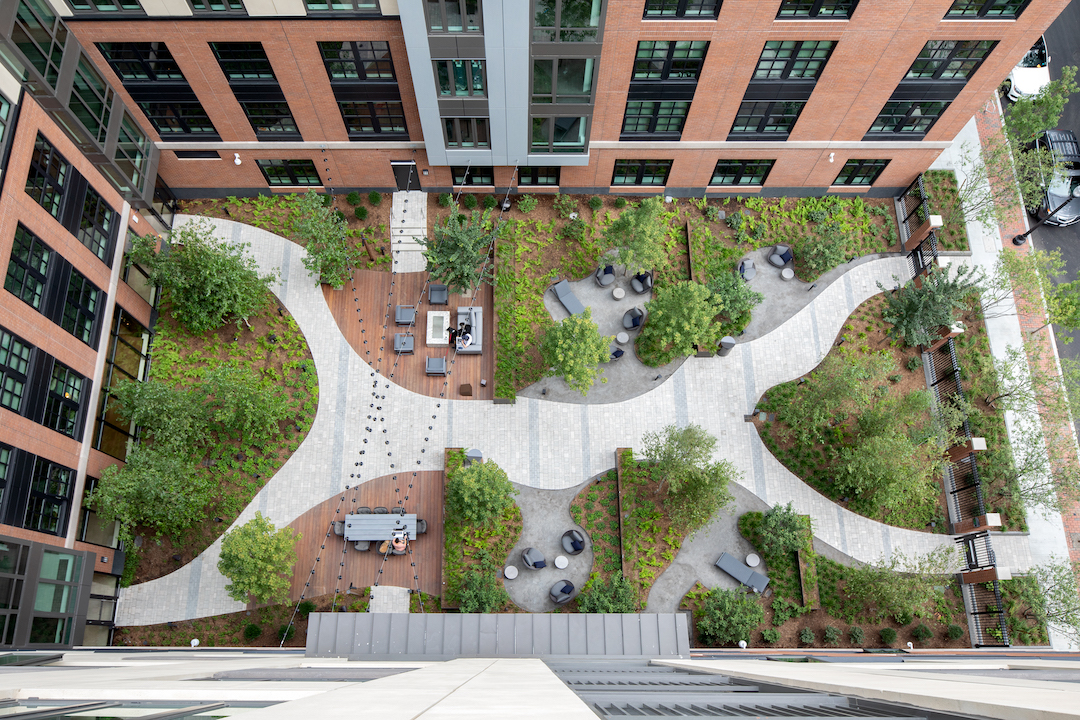
Photo: Ed Wonsek
Access to nature and outdoor light, as shown here, is a key element of Fitwel. The picnic table gets lots of use by tenants working from home. Here, a tenant works on a laptop adjacent to a public street in Boston’s South End.
The openness of the space and the orientation of the structure bring sunlight into the residential units.
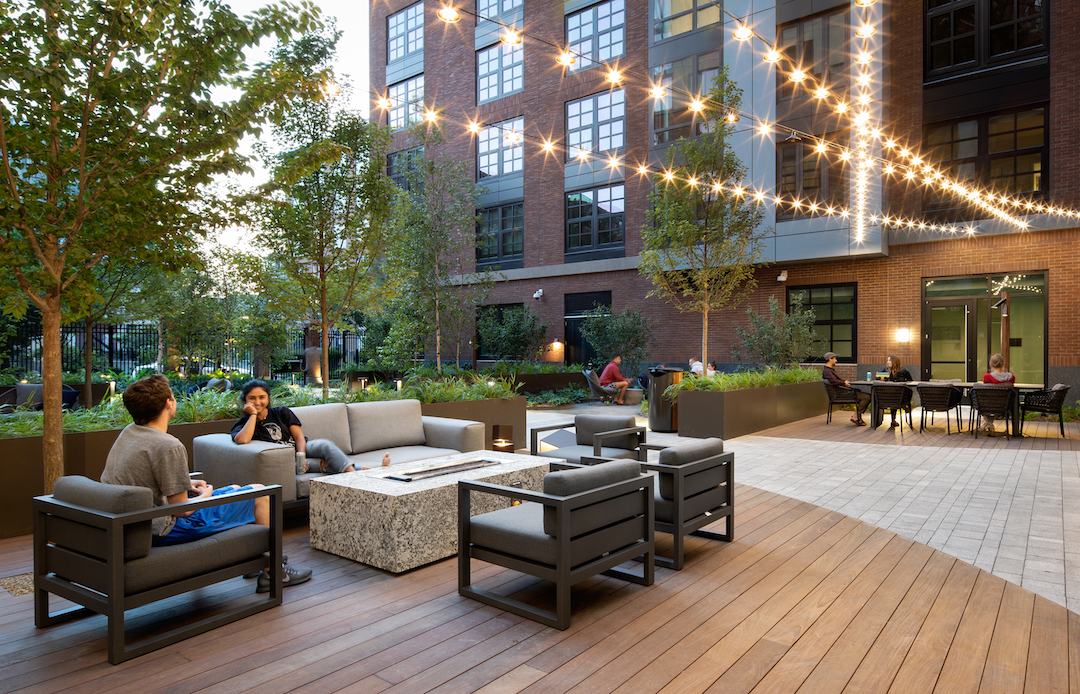
Photo: Ed Wonsek
We are finding that carving spaces into smaller, somewhat divided pods allows a greater variety of seating options.
Two people who live together can safely occupy a more isolated space while distanced from others using the remaining outdoor amenity areas.
ECHELONSEAPORT – BOSTON'S BIGGEST AMENITIES PACKAGE
At EchelonSeaport, designed in collaboration with KPF and Jeffrey Beers International, the building massing was designed to maximize views.
Many residences get an outdoor terrace that is like an extra room to the outdoors. Some of the terraces wrap around two or three sides, providing multiple visual options.
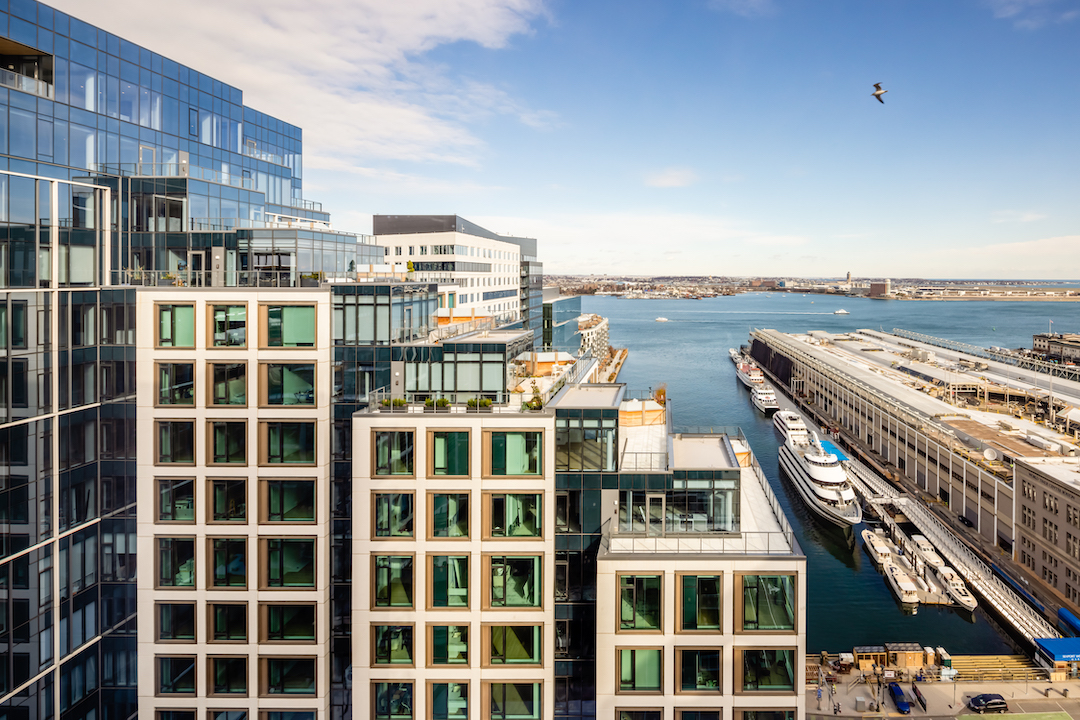
Photo: Raj Das
The developer, Cottonwood, offered the largest amenity package in the city: 60,000 sf of amenities, including a terrace with an outdoor pool, an indoor pool, and a 10,000-sf green roof.
There are 270 luxury residences at The Alyx, EchelonSeaport’s apartment offering. Condo owners at 133 Seaport (255 units) and 135 Seaport (192 units) have access to all amenities; residents of The Alyx can use the pool and outdoor deck.
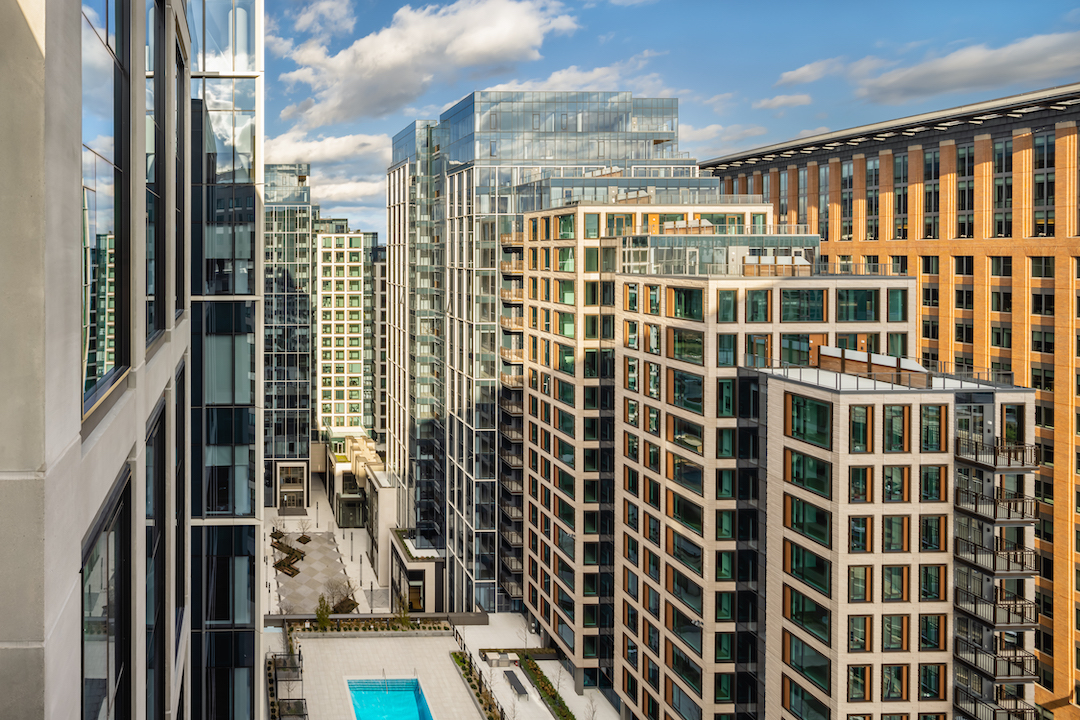
Photo: Raj Das
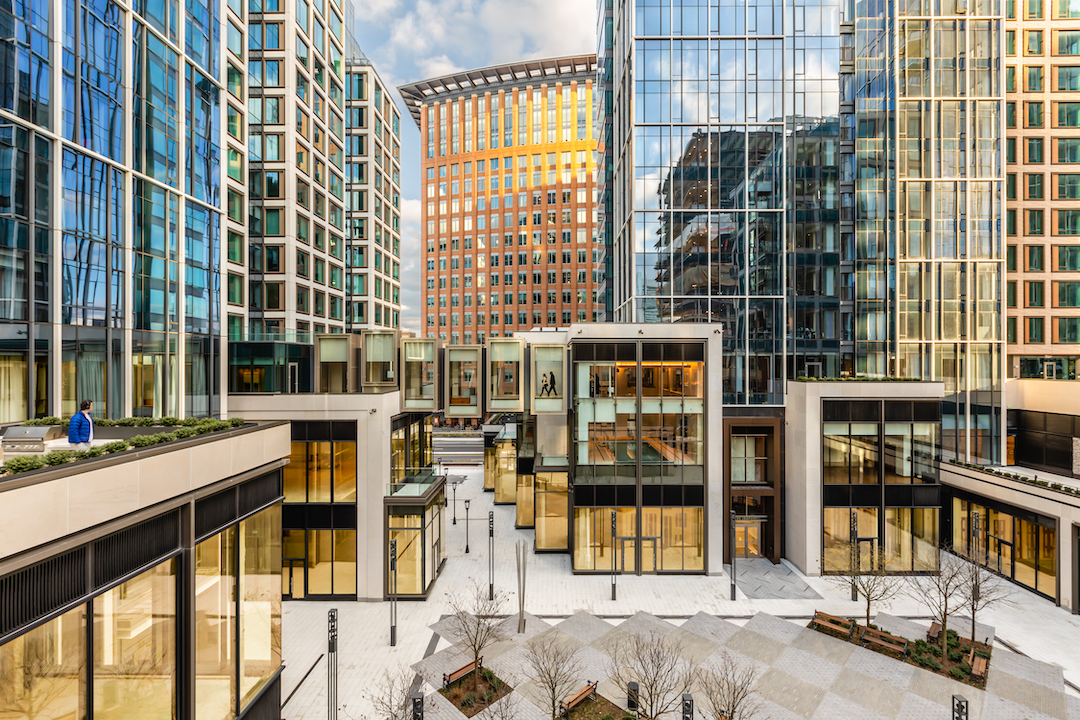
Photo: Raj Das
A tenant fires up a grill on a terrace overlooking the ground-floor public plaza, which features retail and restaurant options.
PIER 4 – OPENING UP TO THE OUTDOORS
Nearly all of the 106 condos at the nine-story PIER 4, designed in collaboration with SHoP Architects, have been sold. Every residence has a private outdoor terrace; its penthouse units have private roof decks with gas and water access to extend living spaces to the outdoors.
Each in-unit balcony features a glass front wall and solid sides to maximize harbor views from the interior and on the balcony.
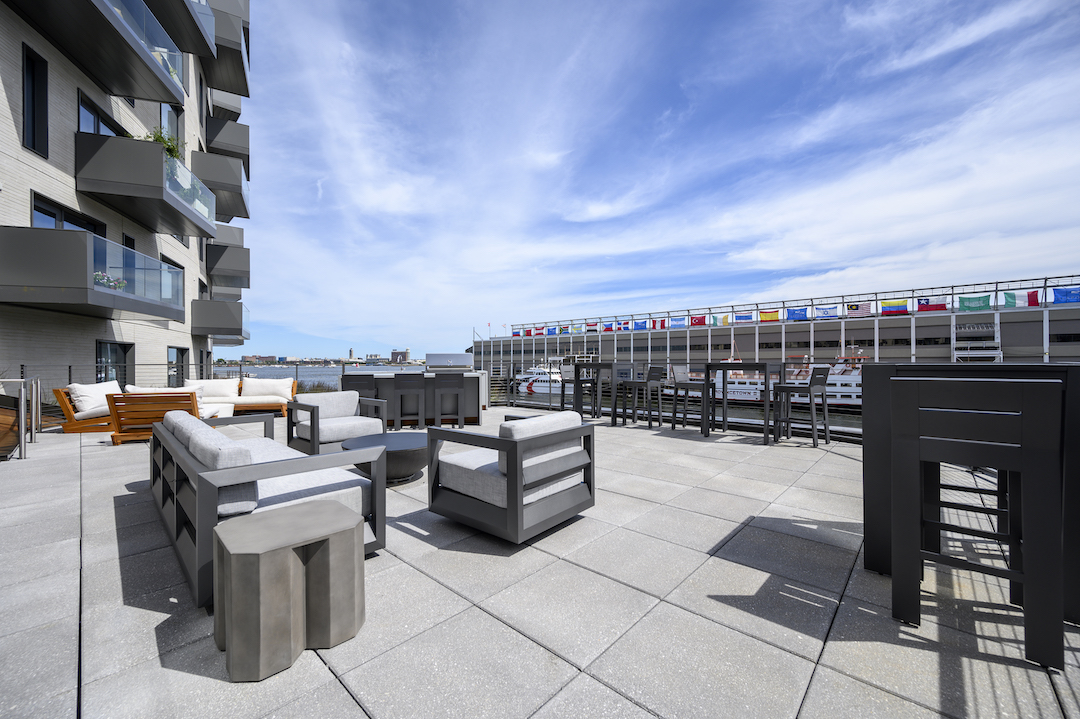
Photo: @flauntboston
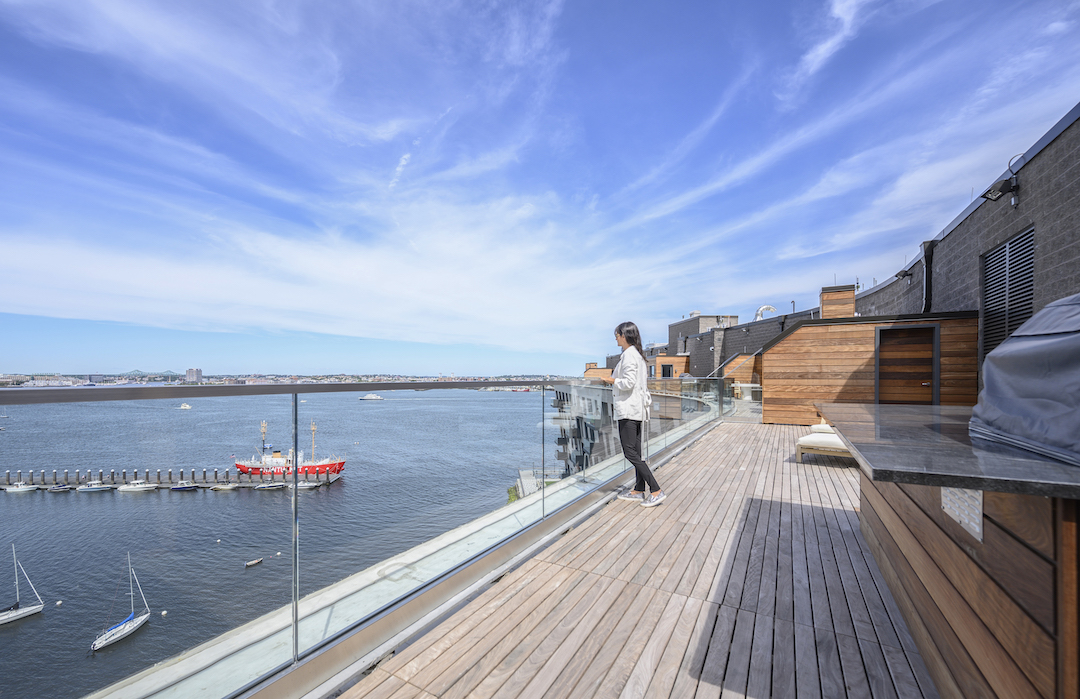
Photo: @flauntboston
The building massing steps back, creating wide-open views of Boston Harbor. Here, a resident takes advantage of the roof deck, which is crafted from sustainably harvested ipe.
The roof decks are supplied with gas for grills, firepits, and overhead heaters to meet resident demand for active outdoor space.
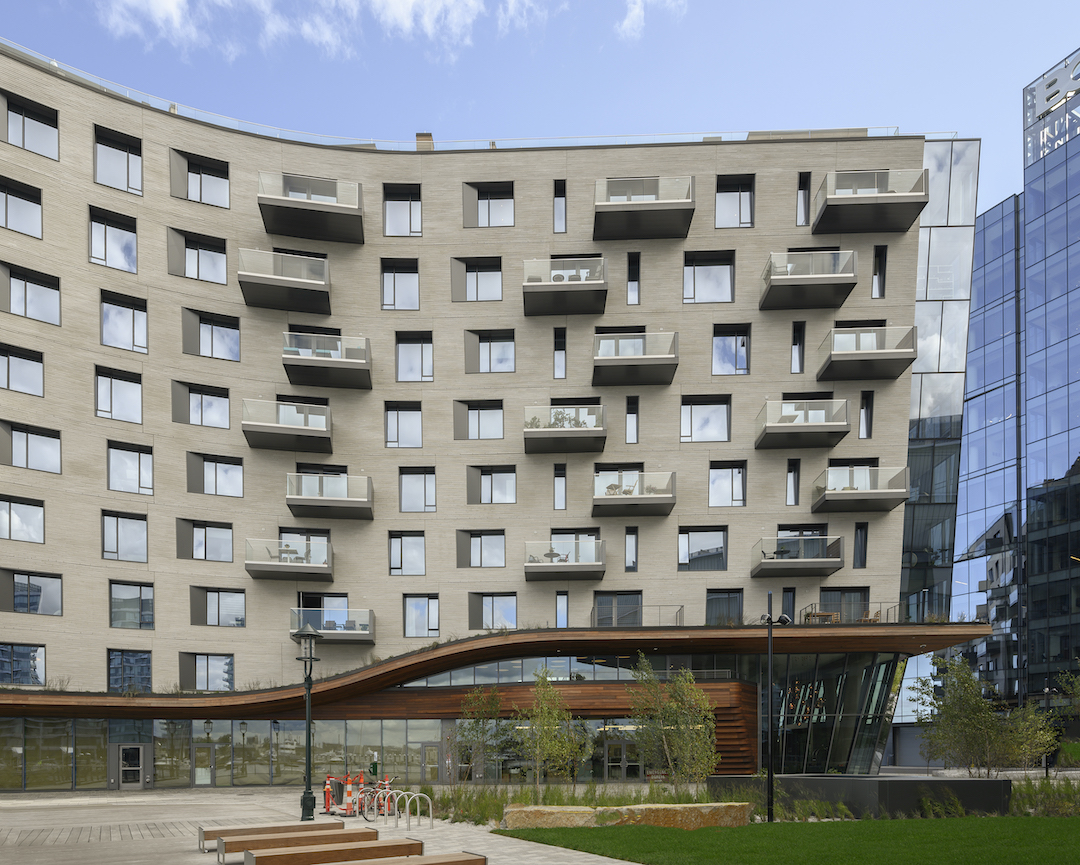
Photo: @flauntboston
Outdoor balconies face new public green space along the Harbor Walk. Developer Tishman Speyer added wood decking, benches, and trees to the public park, which connects to a popular and scenic public walkway.
The park was designed to address resiliency on the harbor, while also encouraging pedestrian interaction with the water.
IMPLEMENTING NEW MULTIFAMILY DESIGN REFINEMENTS
The projects discussed here were completed just before or during the early days of the pandemic.
In our new work, we are implementing new design elements to further accommodate the work from home experience and the health and wellness concerns of tenants:
- Den design: We now put the den on the window wall instead of inside, to open the workspace to the outdoors and bring in more sunlight.
- Bedrooms are being equipped with sliding glass doors, to allow more natural light to penetrate the interior.
- We’re giving more attention to balconies, to allow for clean, fresh air to be brought into the living units.
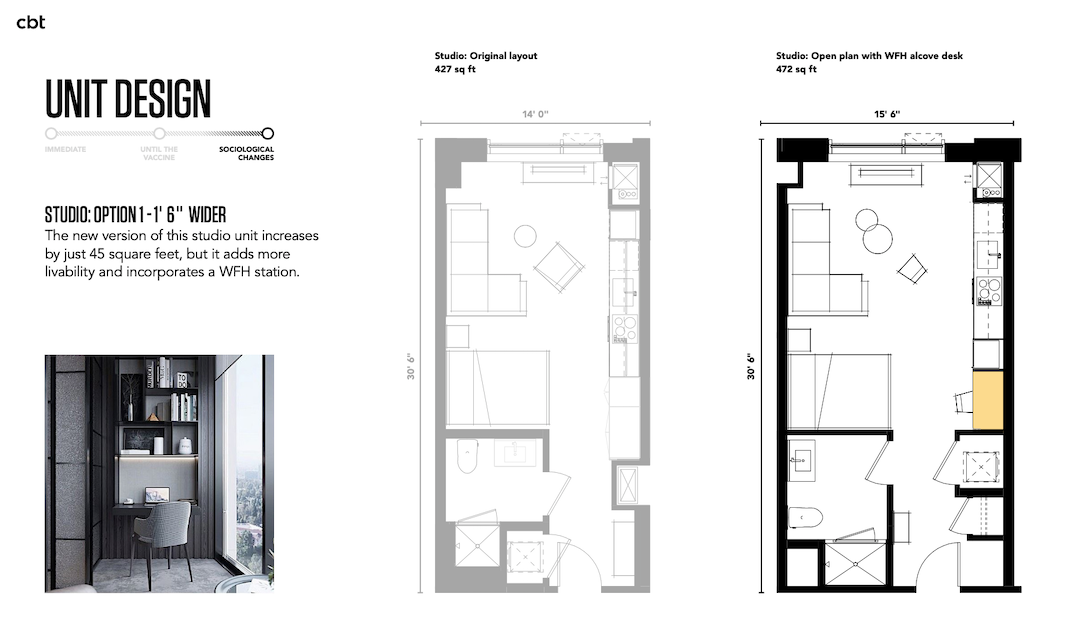
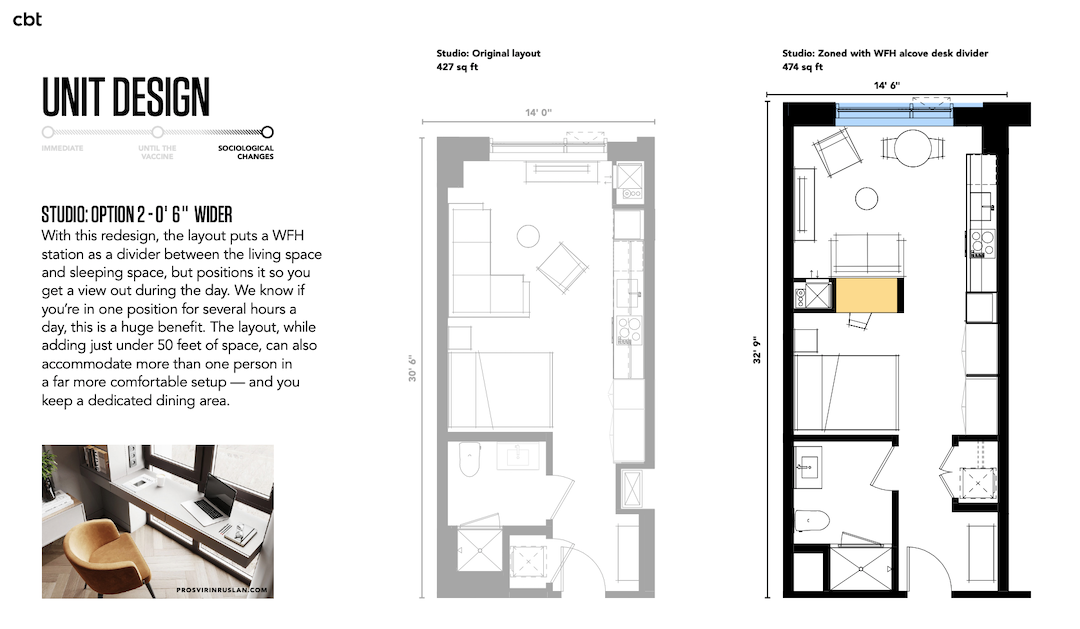
As we at CBT have learned from these projects, using the tenant experience as the central force behind design creates a living environment that outlasts current trends and is useful for years to come.
Building elements that were considered to be conveniences pre-pandemic are now essential for residents’ evolving lifestyles. As needs change, these spaces can be easily reimagined to maintain a building’s timeless nature.
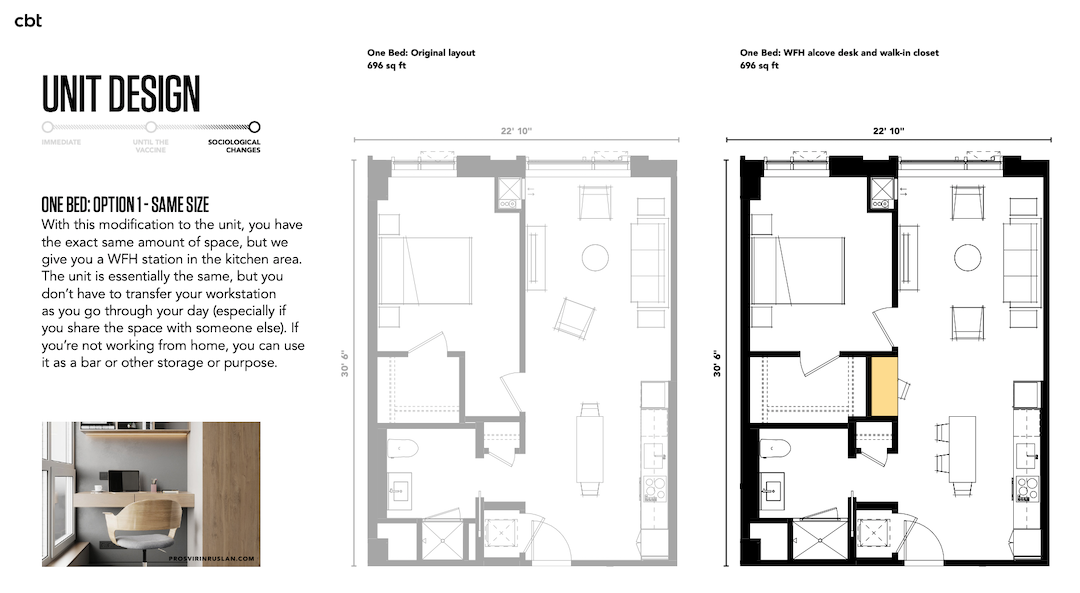
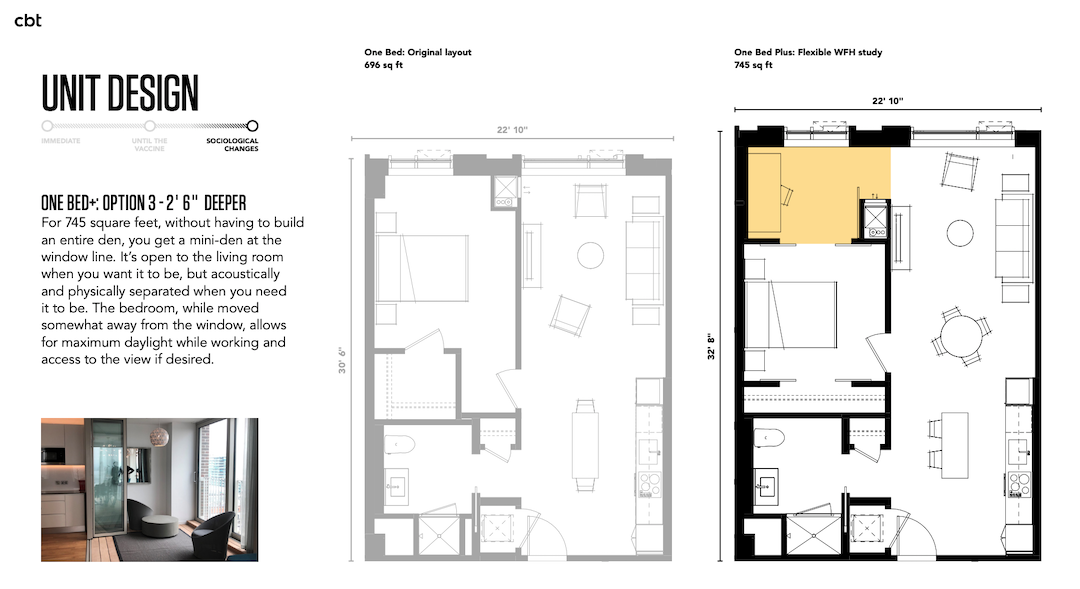
ABOUT THE AUTHOR
Vickie Alani, a Principal at CBT, Boston, has over 30 years’ experience in architecture and interior design, with specialized expertise in multifamily residential and hospitality design. She received BArch and BFA degrees from the Rhode Island School of Design.
Related Stories
| Jan 27, 2011
Perkins Eastman's report on senior housing signals a changing market
Top international design and architecture firm Perkins Eastman is pleased to announce that the Perkins Eastman Research Collaborative recently completed the “Design for Aging Review 10 Insights and Innovations: The State of Senior Housing” study for the American Institute of Architects (AIA). The results of the comprehensive study reflect the changing demands and emerging concepts that are re-shaping today’s senior living industry.
| Jan 21, 2011
Harlem facility combines social services with retail, office space
Harlem is one of the first neighborhoods in New York City to combine retail with assisted living. The six-story, 50,000-sf building provides assisted living for residents with disabilities and a nonprofit group offering services to minority groups, plus retail and office space.
| Jan 21, 2011
Nothing dinky about these residences for Golden Gophers
The Sydney Hall Student Apartments combines 125 student residences with 15,000 sf of retail space in the University of Minnesota’s historic Dinkytown neighborhood, in Minneapolis.
| Jan 21, 2011
Revamped hotel-turned-condominium building holds on to historic style
The historic 89,000-sf Hotel Stowell in Los Angeles was reincarnated as the El Dorado, a 65-unit loft condominium building with retail and restaurant space. Rockefeller Partners Architects, El Segundo, Calif., aimed to preserve the building’s Gothic-Art Nouveau combination style while updating it for modern living.
| Jan 21, 2011
Upscale apartments offer residents a twist on modern history
The Goodwynn at Town: Brookhaven, a 433,300-sf residential and retail building in DeKalb County, Ga., combines a historic look with modern amenities. Atlanta-based project architect Niles Bolton Associates used contemporary materials in historic patterns and colors on the exterior, while concealing a six-level parking structure on the interior.
| Jan 20, 2011
Worship center design offers warm and welcoming atmosphere
The Worship Place Studio of local firm Ziegler Cooper Architects designed a new 46,000-sf church complex for the Pare de Sufrir parish in Houston.
| Jan 19, 2011
Baltimore mixed-use development combines working, living, and shopping
The Shoppes at McHenry Row, a $117 million mixed-use complex developed by 28 Walker Associates for downtown Baltimore, will include 65,000 sf of office space, 250 apartments, and two parking garages. The 48,000 sf of main street retail space currently is 65% occupied, with space for small shops and a restaurant remaining.
| Jan 7, 2011
Mixed-Use on Steroids
Mixed-use development has been one of the few bright spots in real estate in the last few years. Successful mixed-use projects are almost always located in dense urban or suburban areas, usually close to public transportation. It’s a sign of the times that the residential component tends to be rental rather than for-sale.
| Jan 4, 2011
An official bargain, White House loses $79 million in property value
One of the most famous office buildings in the world—and the official the residence of the President of the United States—is now worth only $251.6 million. At the top of the housing boom, the 132-room complex was valued at $331.5 million (still sounds like a bargain), according to Zillow, the online real estate marketplace. That reflects a decline in property value of about 24%.


